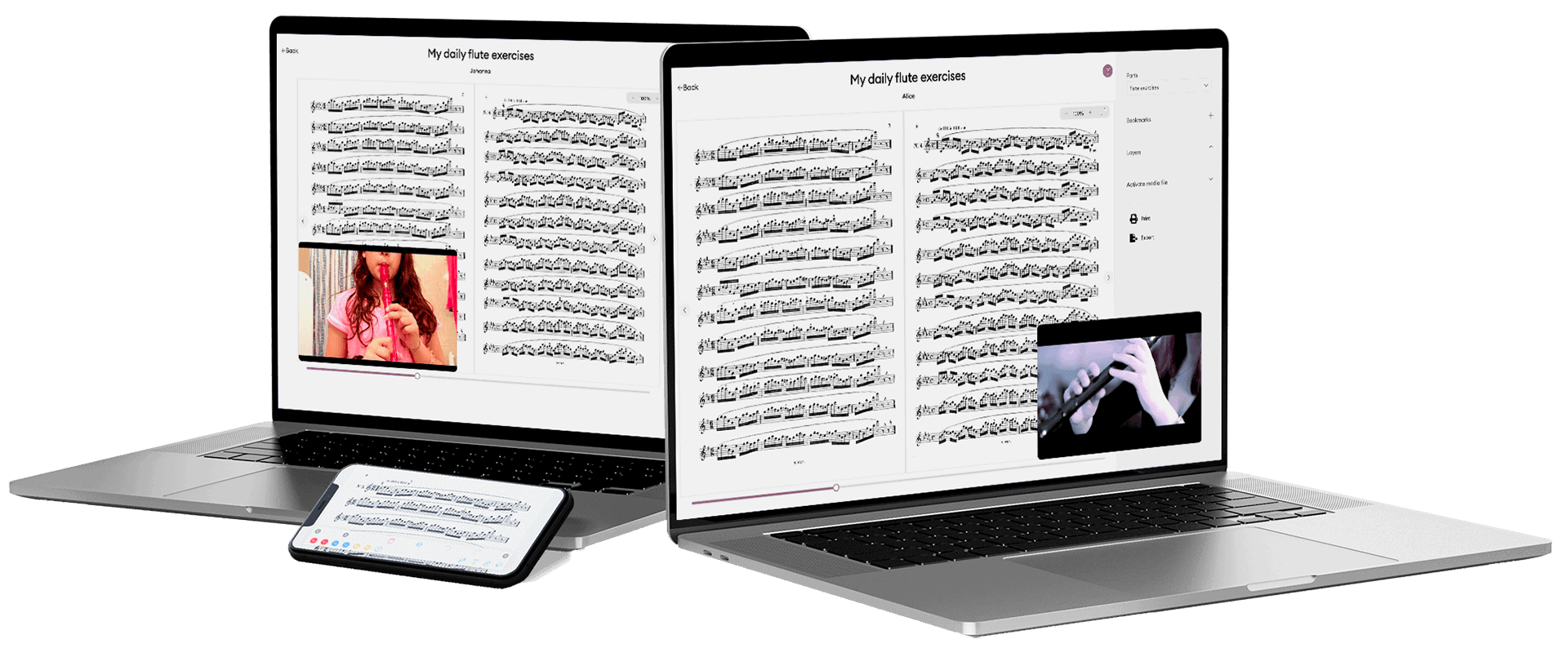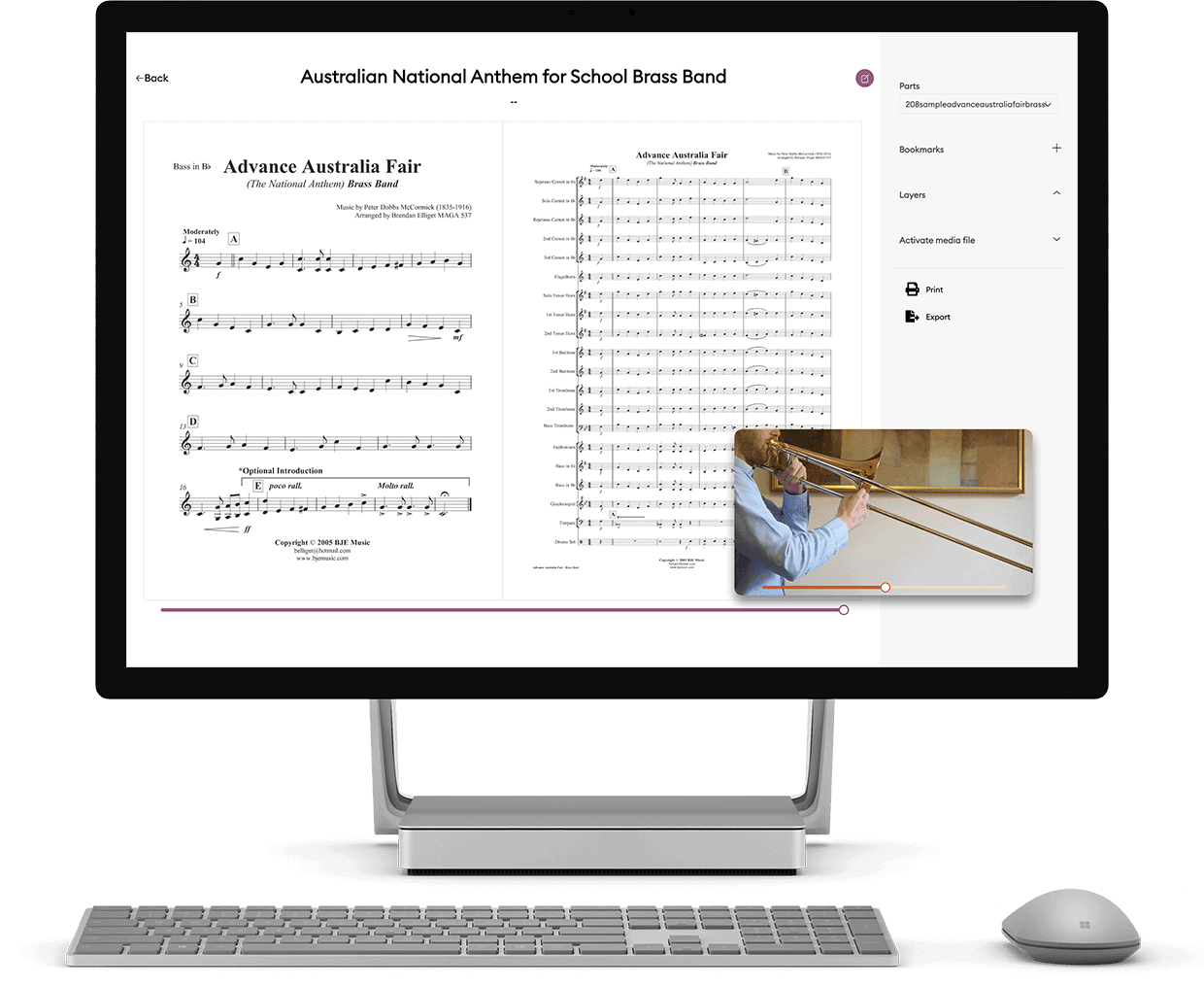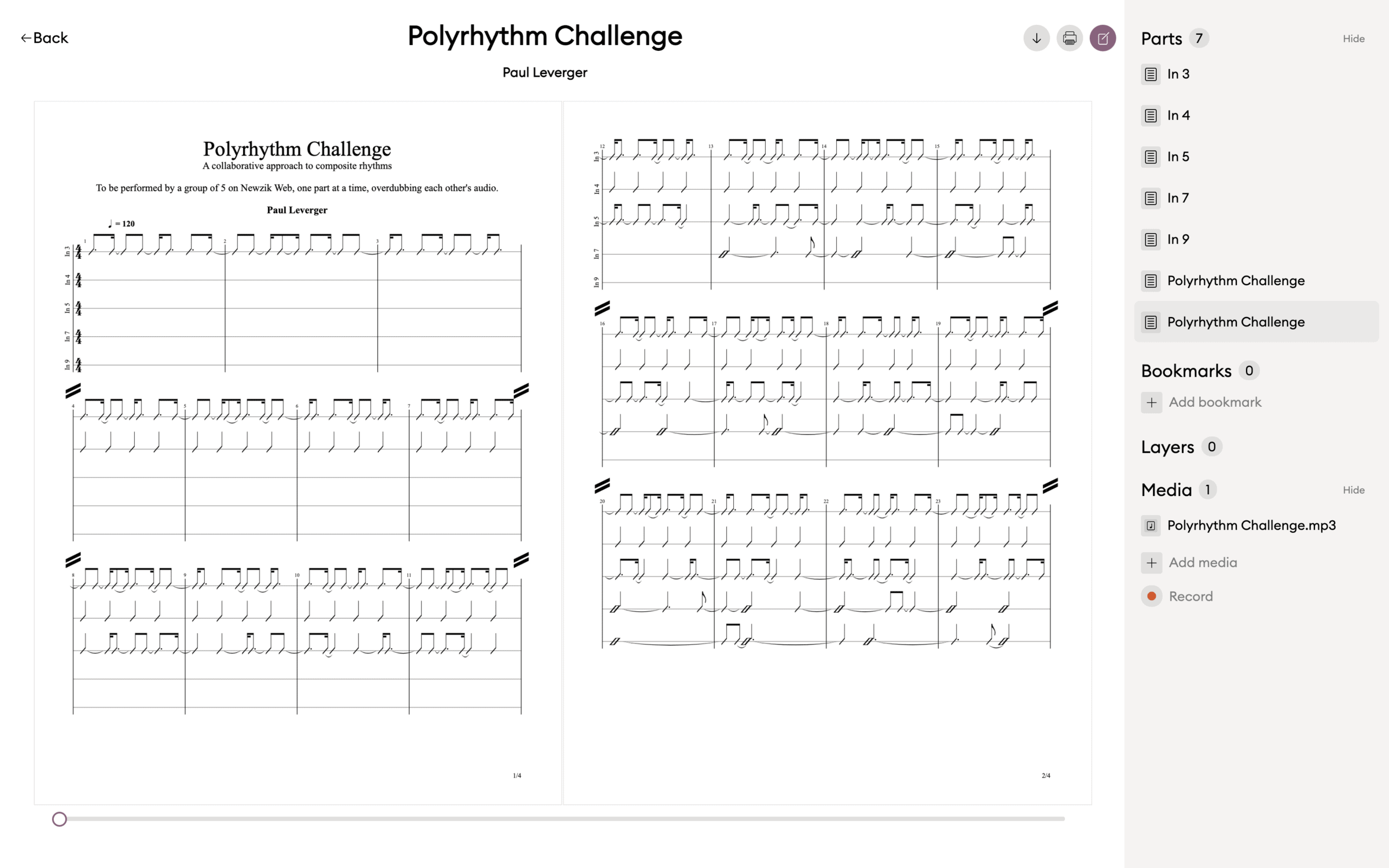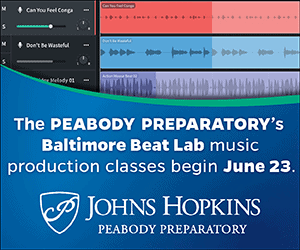/ News Posts / 3 Ideas for Engaging Online Music Lessons Using Digital Scores
3 Ideas for Engaging Online Music Lessons Using Digital Scores
By Paul Leverger, sponsored by Newzik
Last year, music educators had to learn a new set of skills: teaching music from home with video-conferencing software. Among other things, this involves making sure students get the link to the virtual room, letting everyone in, and managing the inevitable mess when everyone joins with their mic on. Who would have thought the keyboard shortcut to mute all participants on Zoom would become such an important thing to know as a teacher?
(In case you’re wondering: it’s alt+M on Windows and Command+Control+M on macOS.)
Besides the technical one, there is a much more serious challenge we need to address: How can we keep students motivated during online music lessons?
It’s easy for kids to lose interest and feel isolated when the classroom atmosphere disappears. Social interactions are one of the biggest drivers of motivation, and that’s why ensemble classes and collaborative music-making exercises are so fun for kids.
So how can we recreate the fun and engaging atmosphere of a classroom online, while providing educational value?
As Chief Marketing Officer for Newzik, I get this question from teachers every single day. In this article, I’ll share three different ways in which digital scores can help you recreate the classroom experience online, and engage kids with fun, collaborative musical experiences.
Digital scores are so much more than digital equivalents of paper scores. They let you add extra layers of interactivity to your scores and create engaging collaborative experiences very easily. I’ll show you how to do this using Newzik, but there are other software options available. However, since Newzik offers a “free forever” version, it’s easy to try these experiences with your students.
1) Create and share interactive play-along exercises in under 10 minutes
With Newzik, you can add audio and video files to a score or record a demo yourself as you play. You can then speed up or slow down this recording without affecting pitch—or transpose it at the original tempo.
Just think about it: In a couple minutes, using nothing more than a PDF score, your computer’s microphone and free software, you have just created an interactive play-along lesson students can practice at any tempo and in any given key. How cool is that?
To share it with your class, you can create a “project,” which is a shared folder your students can access. Anything you or your students add to this folder (scores, videos, audio tracks, markings . . . ) is shared with the rest of the class in real-time. It’s like Google Drive or Dropbox for digital scores. Projects make sharing lesson material and collecting assignment submissions incredibly easy.
Students can also hear each other’s performance, just like in a real classroom. Recreating this group atmosphere and cohesion is super motivating for kids.
2) Record a collaborative rhythmic piece remotely in 15 minutes
Rhythm is often the first thing we learn as a young musician, and arguably one of the most important ones. The ability to listen and react to other musicians’ rhythmic feel is crucial when we play in a band or ensemble. So let’s see how to teach rhythm with digital scores!
Divide your class in teams of 3 to 5 students: Each group will record a collaborative rhythmic piece remotely by overdubbing each other with Newzik’s embedded audio recorder.
First, provide your students with a rhythm exercise. Start easy with a basic groove, or maybe something like Queen’s “We Will Rock You.” Depending on the level you teach, you can make this more advanced by incorporating swing or simple polyrhythms.
It’s important to spread the different components of the rhythm across several staves—one for each team member. Have these elements join gradually to make up the complete rhythm, adding new ones after a couple of bars. To demonstrate this idea, I have created various blueprints for you—from easy exercises to my more advanced “polyrhythm challenge.” Click here to download them.
The first student of each group records the first part with the software’s audio recorder. Remember: Everything is shared in real-time, so other students will receive the audio as soon as it has been recorded.
The second person can then play the track and overdub it with their own part. Warning: Do not use headphones! Contrary to virtual choirs, you do want the original audio to bleed into the microphone.
Move on to the next person in the group, and so on. In under 15 minutes, you can review all submissions to provide feedback . . . and so can your students!
Pro tip: Make this more interesting by asking kids to find a funny-sounding object and use it as a percussion instrument. Each group will get their signature sound, and you can then challenge other groups to guess what objects produced which sound.
3) Compose an original piece with your class in 7 days
Let’s build on the same principle for music theory or composition classes. This third experience is a variation of an “exquisite corpse”—a creative strategy originally used for poetry and applied to music in the 1940s by John Cage, among others.
This third experience is a group assignment students have to complete together within a week. In addition to Newzik, you will also need notation software such as Sibelius or Dorico. For free alternatives you can try Flat or Musescore.
Start by writing a couple bars of melody and/or chords, to provide the initial rhythm and harmony. Students will then collaborate to come up with the rest of the piece.
Share the PDF with the class and provide a link to the notation file at the beginning of the score (paste it as text annotation). To get a download link to your notation file, just upload it to Google Drive or Dropbox, or use WeTransfer.
Ask a first group to download the file and write a couple additional bars, and reupload the new version of the PDF as well as a link to the updated notation file. The next group takes over, and so on until everyone has completed the assignment.
Each group can introduce melodic variations, or new harmonies. You can give specific guidelines to help them come up with interesting ideas—such as adding chord extensions, using a certain mode of the scale, or writing in a given form or structure.
By the end of the week, you not only have the final piece, but also all the subsequent stages of the composition. You can analyze those with the class to understand how certain ideas or variations influenced later stages of the composition.
Pro tip: To go further, ask all the groups to complete each step of the process, although only one group will be responsible for providing the updated notation file to the class. This way, students can compare their personal approach at each step of the composition with their classmates’ choices. When you analyze the final piece with the class, your students will have a better understanding of it, as well as alternative suggestions to solve musical issues. This will make for a more engaging discussion.
Conclusion
Hopefully these exercises will help you get a clearer picture of how using digital scores can make for fun, engaging and interesting learning experiences. These are just a few examples though. There are so many more things you can easily do, from “serious” activities such as virtual choirs to fun, more creative ones, such as organizing a scavenger hunt inside a music score.
To learn more about these ideas and how to try them with your students, join me on February 27 at the NAfME PreK–12 Learning Collaborative for a session during which I’ll go more into the details of why digital scores are so useful for teaching music, and share other useful tips—including how to set up a virtual choir in under 30 minutes.
About the author:
 Paul Leverger is a trained drummer and self-taught keyboardist with a passion for music technology and synthesizers from Paris, France. As Newzik’s Chief Marketing Officer, he contributes to driving the music community forward with technology and is an expert on how to use digital scores to teach, learn, and perform music in efficient, creative ways.
Paul Leverger is a trained drummer and self-taught keyboardist with a passion for music technology and synthesizers from Paris, France. As Newzik’s Chief Marketing Officer, he contributes to driving the music community forward with technology and is an expert on how to use digital scores to teach, learn, and perform music in efficient, creative ways.
Did this blog spur new ideas for your music program? Share them on Amplify! Interested in reprinting this article? Please review the reprint guidelines.
The National Association for Music Education (NAfME) provides a number of forums for the sharing of information and opinion, including blogs and postings on our website, articles and columns in our magazines and journals, and postings to our Amplify member portal. Unless specifically noted, the views expressed in these media do not necessarily represent the policy or views of the Association, its officers, or its employees.
February 12, 2021. © National Association for Music Education (NAfME.org)
Published Date
February 12, 2021
Category
- Technology
Copyright
February 12, 2021. © National Association for Music Education (NAfME.org)






